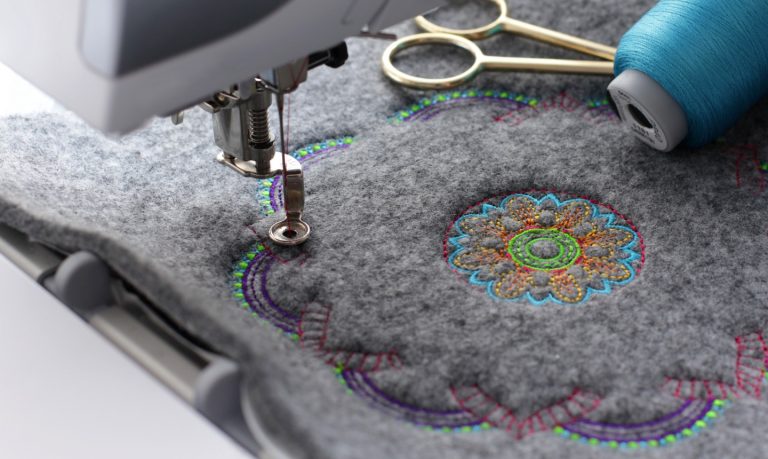Simplifying the Art of Needlework Digitizing: Step-by-Step Overview
As modern technology continues to breakthrough, the digitization procedure has ended up being extra obtainable, enabling lovers to bring their intricate styles to life with ease. In this guide, we will certainly untangle the complexities of needlework digitizing, breaking down each step carefully to simplify the procedure and empower both beginners and skilled embroiderers alike.
Comprehending Embroidery Digitizing Software Program
Needlework digitizing software application acts as an important tool for transforming detailed layouts right into digital styles suitable with needlework equipments, assisting in precise stitching and modification. This specialized software application permits customers to import various picture documents layouts, such as JPG or PNG, and convert them into embroidery machine-readable layouts like DST, EXP, or PES - Digitizing for Embroidery. By utilizing functions like stitch editing, rug alternatives, and thread shade selection, digitizing software application enables individuals to regulate every element of the design procedure
Furthermore, progressed needlework digitizing software application offers devices for creating intricate styles, adjusting stitch density, and including complex details. Users can additionally preview the style prior to stitching it out, making certain accuracy and lessening errors. In addition, numerous software programs supply automated functions that assist enhance the digitizing procedure, saving time and effort.
Comprehending the capacities of embroidery digitizing software is vital for achieving high-quality lead to embroidery tasks. By mastering this tool, needlework fanatics and professionals can release their creativity and bring elaborate styles to life with precision and efficiency.

Picking the Right Style Data
After familiarizing on your own with the abilities of needlework digitizing software program, the next important action in the procedure is picking the ideal layout declare your task. Digitizing for Embroidery. When choosing a style declare embroidery digitizing, it's vital to think about the complexity of the design, the dimension of the end product, and the kind of material you will certainly be collaborating with
For detailed designs with fine information, a high-resolution picture or vector data is advised to make certain that the embroidery device can precisely duplicate the design. Additionally, the size of the end product plays a substantial duty in choosing the right layout documents. Bigger designs might call for higher resolution files to keep clearness and sharpness.
Furthermore, the kind of fabric you will certainly be stitching on influences the option of design documents. Different materials might require changes in the layout file to make sure that the stitches are properly lined up and the layout appears as meant. By carefully choosing the appropriate design data based upon these factors, you can set on your own up for a successful embroidery digitizing procedure.
Digitizing Tools and Methods
Utilizing specialized software application and precision methods, digitizing devices are vital in transforming elaborate layouts into embroidery-ready documents. Embroidery digitizing software application, such as Wilcom, Hatch, or Embrilliance, offers the required system to transform artwork right into stitch information. These programs use attributes their explanation like stitch editing and enhancing, rug choices, and lettering tools to guarantee the style converts flawlessly onto fabric.
Among the crucial techniques in digitizing is developing a clear path for the embroidery equipment to adhere to. This entails digitizing each component of the layout with accuracy, establishing stitch kinds, thickness, and instructions. By making use of read the full info here tools like digitizing tablets or software-specific plugins, embroiderers can accomplish a high degree of accuracy in their digitized designs.
In addition, grasping the art of underlay stitching is vital for creating high quality needlework. Underlay sewing stabilizes the textile and develops a structure for the style, making sure that the last product is both visually attractive and lasting. By understanding these digitizing tools and techniques, embroiderers can boost their craft and bring detailed layouts to life with accuracy and effectiveness.
Tailoring Stitch Kinds and Instructions
The option of stitch types can substantially affect the general look and structure of the embroidered style. By purposefully combining these stitch types, embroiderers can achieve deepness and dimension in their layouts.
Additionally, the instructions of stitches plays a vital role in enhancing the visual allure of the final embroidery. By exploring with various stitch angles and patterns, embroiderers can bring their designs to life with remarkable detail and intricacy.
Screening and Refining Your Digitized Design
To make certain the precision and top quality of your digitized style, complete testing and refinement are crucial actions in the embroidery digitizing procedure. Once you have actually finished the digitization of your layout, it is vital to test it prior to proceeding with the actual needlework. Examining enables you to determine any potential issues such as string breaks, sew density problems, or design distortions that might influence the final result.

After testing, it is essential to refine your digitized layout based upon the comments from the test like this sew-out. This might entail tweaking sew setups, changing densities, or making changes to the total layout to accomplish the desired end result. By repeating with testing and improvement, you can adjust your digitized style to perfection prior to moving on with the real needlework process.
Conclusion
In conclusion, mastering the art of needlework digitizing calls for a comprehensive understanding of the software, choosing the ideal design documents, utilizing digitizing devices and techniques, personalizing stitch types and instructions, and screening and improving the digitized layout. By adhering to these actions, embroiderers can simplify the digitizing process and create premium embroidered designs with accuracy and efficiency.